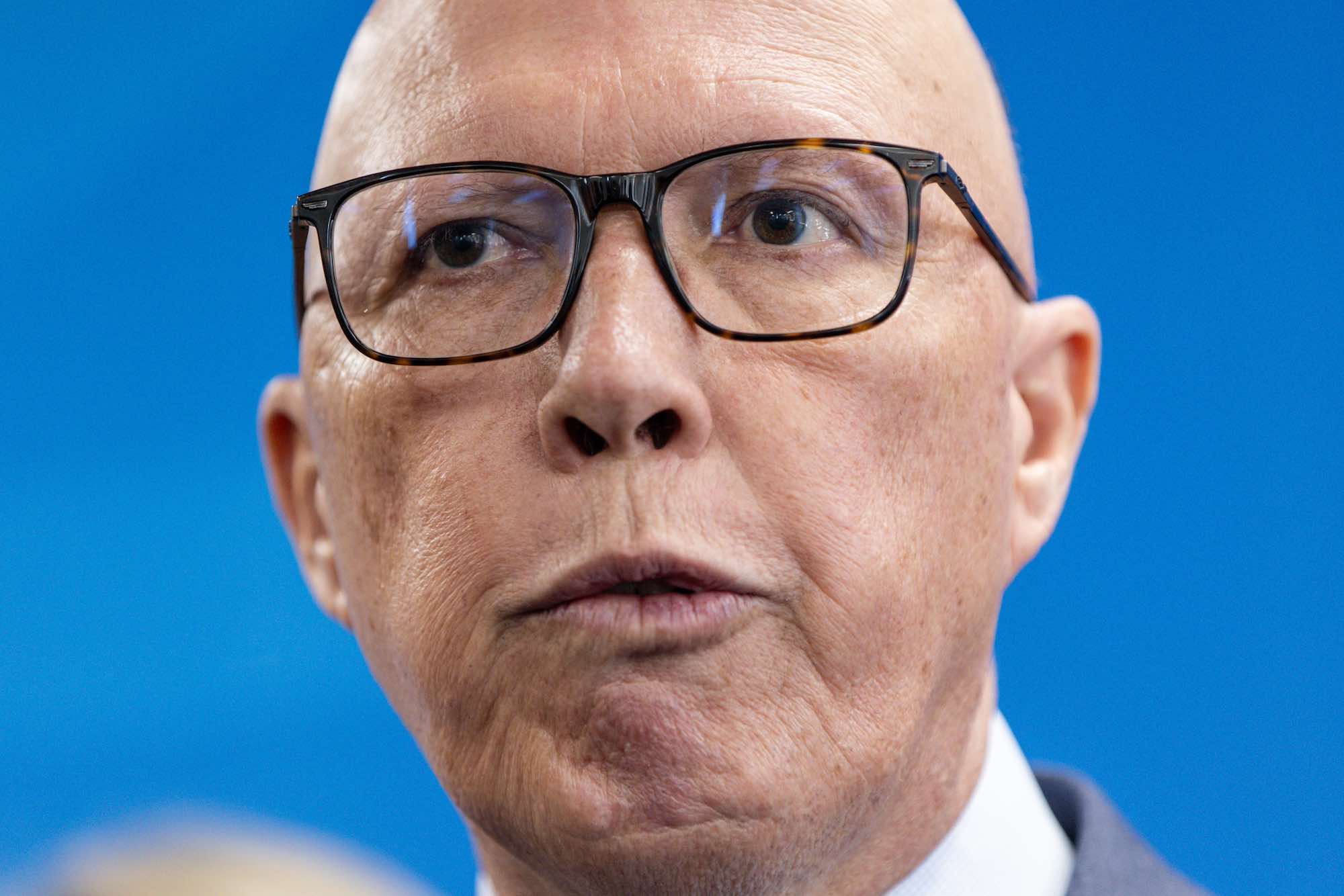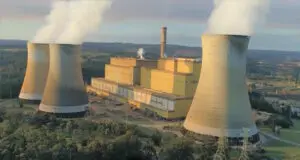In the wake of federal Labor’s announcement on Monday of a $2 billion green aluminium production credit scheme, it has been difficult to find anyone outside of Liberal National Party ranks who isn’t loudly singing its praises.
The Australia Aluminium Council, for starters, is thrilled – after all, this is more or less exactly what it asked for in a submission to federal energy minister Chris Bowen in July last year.
“In his 2019 book, Superpower: Australia’s Low-Carbon Opportunity, Ross Garnaut discussed Australia’s potential to best utilise its abundant bauxite reserves by leveraging Australia’s renewable energy potential to create a competitive advantage in aluminium production by reducing energy costs to produce low carbon aluminium,” the submission says.
“The Council believes that government support is needed, in the form a production credit, until Australian energy costs reduce in line with projections.”
Two things worth noting from the above extract and the AAC’s broader submission are that the idea of using Australia’s abundant renewable energy to breathe life back into one of its most valuable industries has been around for some time – including back during the federal Coalition’s long time in power.
The second point worth noting is that nowhere in the 27-page submission that offers feedback on the Albanese government’s Future Made in Australia policy and details the aluminium industry’s potential decarbonisation pathways does nuclear power get a single mention.
That is because, to paraphrase a report by IEEFA guest author Clark Butler from June 2020 – back when the federal Coalition and fossil fuels still reined supreme – Australia’s aluminium sector is failing, with all smelter operators losing money and considering closure.
It needs cheaper cleaner power, now. And if it has to wait for nuclear to save the day – assuming that Australia could defy the odds and build nuclear from scratch to deliver cheap electricity – it will be far too late.
And there is plenty to lose.
To paraphrase the AAC, Australia is the world’s largest exporter of alumina with six alumina refineries producing around 21 Mt per annum. It is the seventh largest producer of aluminium, with four smelters and additional downstream processing industries including more than 20 extrusion presses.
Aluminium is one of the commodities most widely used in the global transition to renewables and is Australia’s top manufacturing export, worth about $3.3 billion in 2023 alone. The industry directly employs more than 17,000 people and indirectly supports around 60,000 families predominantly in regional Australia.
In the energy market, aluminium smelting is a crucial player in the supply demand balance, accounting for approximately 10% of Australia’s electricity demand while also being responsible for 6.5% of total carbon emissions.
“This investment transforms risk into opportunity,” said Climate Councillor and energy expert Greg Bourne on Monday in praise of the new policy.
“By supporting the aluminium industry to invest in Australia’s abundant solar and wind power, backed by big batteries, the Green Aluminium Production Credit sets a new benchmark for renewable-powered manufacturing. This is what a thriving, climate-resilient economy looks like.”
And in case an energy expert’s word doesn’t cut it, here’s the chief of Rio Tinto, the owner of three out of four of Australia’s aluminium smelters.
“The Australian government’s commitment shows strong confidence in domestic manufacturing and the nation’s position in the global economy,” said Kellie Parker, who hosted prime minister Albanese at the company’s Tomago facility in New South Wales for Monday’s policy announcement.
“As traditional energy sources for heavy industry become increasingly uncompetitive, today’s announcement is a critical piece in helping future-proof the industry. Such support is crucial for sustaining and growing regional economies.
“As global industrial customers and consumers increasingly focus on low-carbon products, this support signals Australia’s potential to be a major supplier of the aluminium needed for the global energy transition, creating a foundation for local businesses and manufacturing to thrive.”
Still, none of this stopped the leader of the federal opposition, Peter Dutton, from denouncing the green aluminium production credit scheme as a “$2 billon con job” and claiming it will result in jobs being moved offshore.
“I can’t find anywhere in the world an aluminium smelter, a high energy use aluminium smelter, that is only run on wind and solar and batteries,” the opposition leader told reporters.
This might be true, for the moment, anyway – but it’s also kind of the whole point. As Butler put it, five years ago now, “if the aluminium sector could be reinvigorated and put on a globally competitive footing, Australia can get five years ahead on the decarbonisation path.
“However, if the smelters close and all that load is lost, building this kind of investment momentum will be far more difficult and Australia could fall five years or more behind more forward-looking countries.”
It’s about seizing the moment to create a competitive advantage. Certainly, that is what smelter owners like Rio Tinto have been trying to do now, for years.
In August last year, Rio sealed a major new deal with the Queensland government to safeguard the future of the state’s struggling Boyne aluminium smelters in Gladstone as they transition from coal to renewable energy.
Of the 5 GW of new capacity required for Rio’s Gladstone smelters and refineries in Queensland, it has locked in more than 2.2GW through power purchase agreements, or PPAs.
Those contracts include European Energy’s 1.1 GW Upper Calliope solar project in central Queensland, and the 1.4 GW Bungaban wind project to be developed by iron ore billionaire Andrew Forrest’s majority owned Windlab. Both are the largest of their kind in Australia.
But the resources giant has also been in negotiations around public assistance for the more costly storage and other dispatchable capacity before embarking on new renewable energy tenders.
“The task remains challenging,” the CEO of Rio Tinto Group, Jakob Stausholm, said in February, after signing the company’s second PPA in a matter of weeks, with the Bungaban wind farm.
“But we have a pathway to provide the competitive, firmed power our Gladstone plants need and we are continuing to work hard with all stakeholders, including the Queensland and Australian governments, on getting there.”
The Rio majority-owned Tomago smelter in NSW Hunter region – the biggest single energy consumer in the country at 8 terawatt-hours a year – last year launched a major tender process to shift its power supply to firmed renewables.
Could Rio’s smelters run on nuclear power? According to the head of Pacific Repowering in Rio Tinto’s energy and climate division, Vik Selvaraja, the answer is no, because it is too slow and too expensive.
“As far as we can see … all validated and independent data that exists on costs say that it (nuclear) is a very expensive source of energy. And I think in Australia, certainly, we’ve got low cost wind and solar, and we were going to run with that,” he told Renew Economy’s Energy Insiders program.
Dutton, meanwhile, no doubt believes that “high energy use” smelters can only be run by “always on” power generators like nuclear. But this, too, is outdated thinking.
Certainly, aluminium smelters usually rank among the biggest single energy consumers on their respective grids, and have traditionally relied on contracts with baseload fossil fuel plants to operate.
Equally, though, gentailers have relied on aluminium smelters as reliable sources of consistent demand for their fossil fuel plants. For a number of reasons, not least of all the urgent race to halt dangerous climate change, this arrangement is no longer sustainable. And even excluding climate change, it hasn’t been working the way it used to.
In 2019, Alcoa’s Portland smelter in Victoria made a loss despite a $200 million support package from the state government. Alcoa was quoted as saying the smelter was in “one of the highest energy price markets on the planet.”
Aside from shifting to an electricity supply of firmed, cheap renewables, the idea of using aluminium smelters as sort of “reverse batteries” – running at full tilt when the supply of cheap renewable energy is flush and then being rewarded for powering down during peak periods to free up supply – is also emerging as part of the new way forward.
Last year, a 20-year deal between the Rio-owned New Zealand Tiwai Point aluminium smelter and various NZ energy companies set pricing for an aggregate of 572 megawatts (MW) of electricity to meet the rapidly failing smelter’s full needs, backed by a mix of South Island renewables.
The deal also offers 20-year demand response contracts with Meridian Energy and Contact Energy, under which New Zealand Aluminium Smelters (NZAS) can be called on to reduce its electricity consumption by up to 185MW, at times of tight supply and high demand.
At the time, Meridian Energy chief Neal Barclay described the agreement is a “fantastic outcome” for all parties after many years of hard work.
“The demand response element of this new agreement is groundbreaking, not only for this country but globally,” Barclay said.
“The level of flexible demand offered by NZAS will support the electricity system to become even more renewable, while relying less on coal and gas when the hydro lakes are low.
“This new package of contracts is commercially sustainable and delivers value for our shareholders, so we are talking a real win-win here. The NZAS decision to extend the smelter life removes significant uncertainty for the electricity sector, which also helps pave the way for new renewable energy to be built.”
So, does Dutton think all of these people are part of a federal Labor-concocted con job?
Has he actually asked what Australia’s emissions-intensive industries want?
Here’s a tip, this time from the Australian Aluminium Council’s March 2023 submission to energy ministers on the introduction of an emissions reduction objective into the National Energy Objectives:
“The Council and its Members are seeking a national climate and energy policy framework which is transparent, stable and predictable, while maintaining the economic health of the nation including vital import and export competing industries and recognise that the NEO is an important
part of this framework.”








